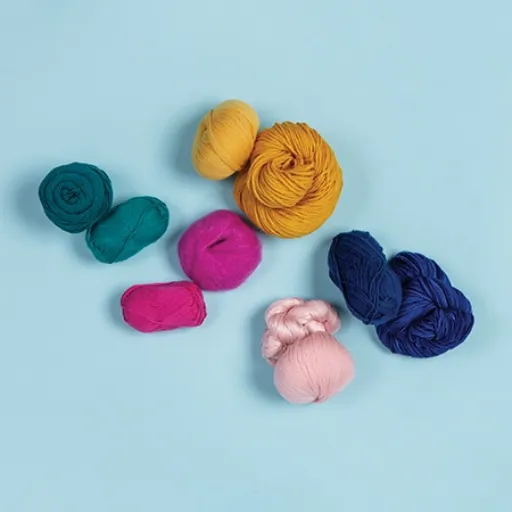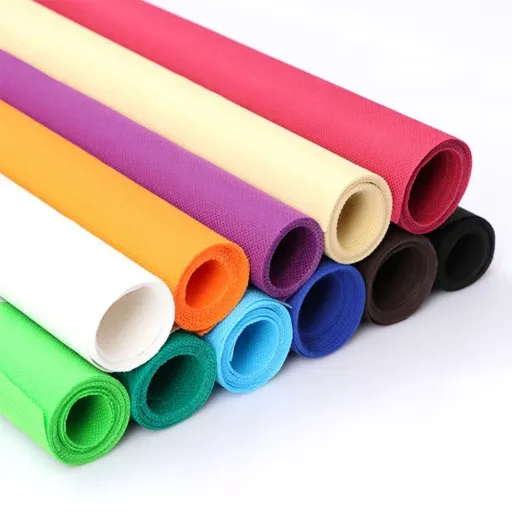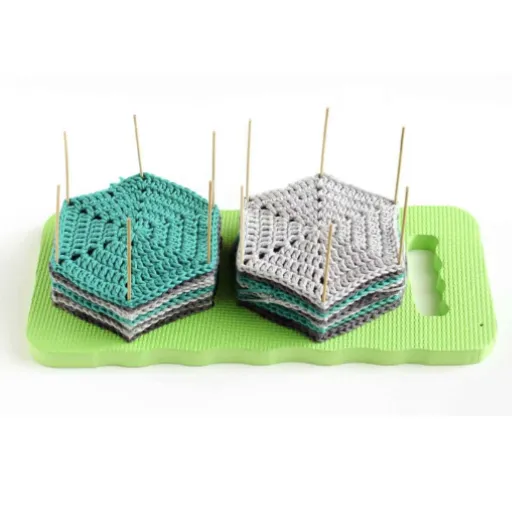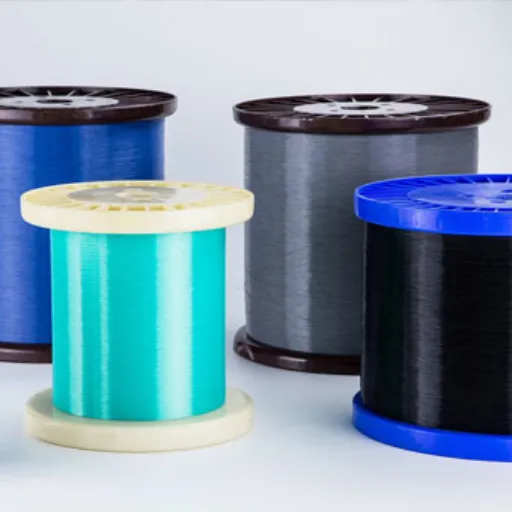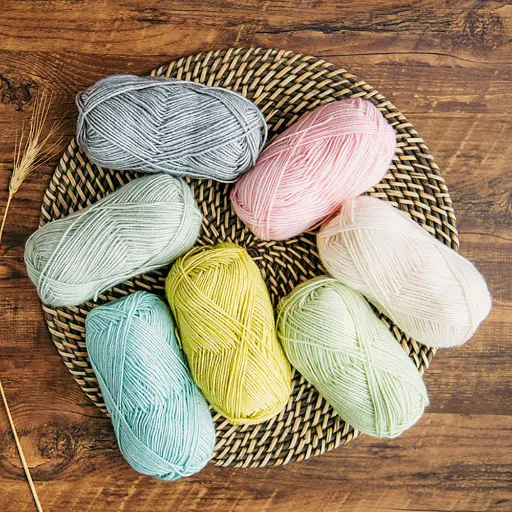Fabric selection is among the crucial decisions, with the two most popular choices being polyester and cotton. These two fabrics are considered staples in the textile industry, but they are quite dissimilar in composition, performance, and application. Understanding some of the special qualities of polyester and cotton would greatly enhance a buyer’s ability to make better choices, whether they are looking for apparel, bed sheets, or upholstery. We analyze the pros and cons, and when to use one or the other, so you can decide what will best suit your needs. Let us now explore the science, usage, and working mechanisms that entail these two flexible fabrics.
What is Polyester?
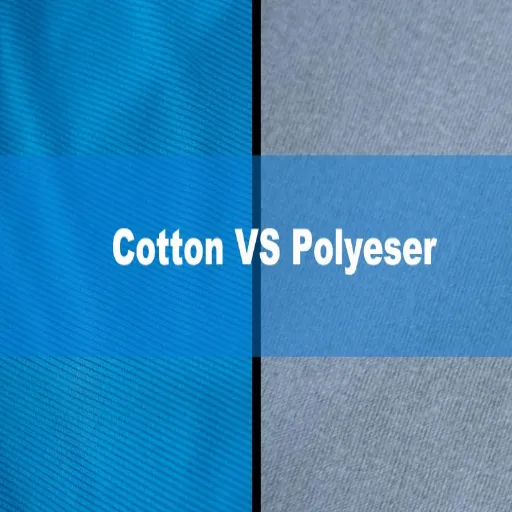
Polyester is a synthetic fabric composed of petroleum products. The chemical synthesis involves combining ethylene glycol with terephthalic acid, which is then spun into fibers. The significant properties include durability, resistance to wrinkling, and low moisture absorption, with applications in garments, household items, and various industries. Polyester finds its way into many products due to its low cost and versatility, primarily in applications where strength and quick-drying properties are required.
Advantages of Polyester Fabric
Polyester fabric offers several benefits, which is why it is preferred across various industries. Highly durable, these products maintain their dimensions and resist wear over time, even with frequent use. Being wrinkle-free means no heavy ironing, making for practical wear and maintenance. Furthermore, activewear and outdoor gear perform well with polyester due to its low absorption level and rapid drying time. New developments in textile technology have further improved polyester’s breathability and comfort, as many previously considered it less natural than organic fibers. Coupled with low cost and recyclability, these factors combine to make it a lucrative option when recycled and reused responsibly. These qualities can be attributed to the benefits of polyester in present-day applications.
Disadvantages of Polyester Fabric
Of course, besides its advantages, polyester fabric also has several disadvantages. One thought often expressed is that polyester doesn’t breathe well, unlike some natural fibers, making it quite uncomfortable during hot and muggy weather. Polyester is particularly susceptible to odor retention in active sportswear because it cannot wick moisture as well as some natural fibers. It is also not compostable; thus, when it is not recycled or properly disposed of, it adds to long-term landfilling. From an eco perspective, the polyester manufacturing process may also produce some toxic chemicals and consume a fair amount of energy. Some people may also find polyester fabrics irritating or allergenic to their skin, particularly if they have sensitive skin. It is because of these points that discussing polyester’s pros and cons can help someone when selecting fabrics for individual applications.
What is Cotton?
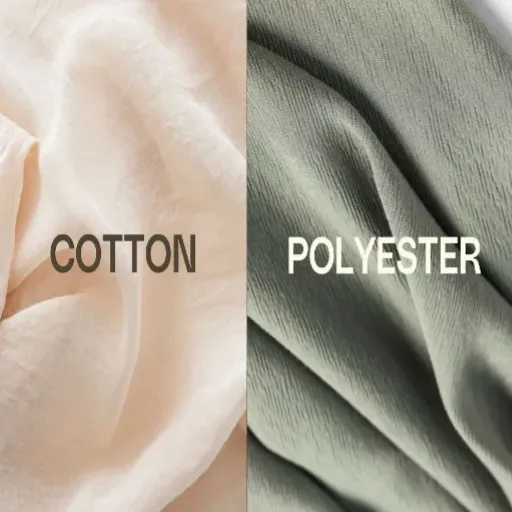
Located in warm climate areas worldwide, cotton is a natural fiber harvested from the seeds of the cotton plant, which contain silk-like hairs. Its most prominent brands of soft textiles are dust-free, offering a gentle option for clothing, bedding, and a variety of other textiles. Cotton is biodegradable, renewable, and comfortable to wear, making it the best and most preferred choice for those who are environmentally conscious as well as skin-conscious.
Advantages of Cotton Fabric
- Breathability: Cotton fabric has better breathability, as it wicks away moisture and allows air to pass through, keeping the body cool and comfortable during warm weather.
- Softness and Comfort: Because it’s naturally soft, cotton is ideal for direct contact with the skin. People with sensitive skin or allergies should thus consider cotton fabric.
- Durability: It is strong and resilient; the cotton fiber withstands frequent washing and wearing. When properly cared for, cotton clothing can serve for many years.
- Biodegradable and Sustainable: Cotton is a biodegradable natural fiber; therefore, it does not contribute significantly to environmental pollution when disposed of. Additionally, cultivating organic cotton promotes sustainability and ecological balance.
- Versatility: Cotton, when woven or knit into various types of fabrics, makes it suitable for a wide range of items, including apparel, home textiles, and industrial uses.
Disadvantages of Cotton Fabric
- High Water Consumption: Due to the large water requirements for cotton farming, it is less sustainable in water-scarce areas. Hence, the production of one cotton t-shirt took nearly 2,700 liters of water.
- Vulnerability to Pests: Cotton crops are susceptible to pests, so they often require heavy pesticide applications. These pesticides can pollute the environment and pose serious health risks to farmers and nearby communities.
- Energy-Intensive Processing: The production of cotton involves numerous energy-intensive steps, including spinning, weaving, and dying. They all leave a significant environmental footprint when not handled efficiently.
- Wrinkling and Shrinkage: Cotton fabrics tend to wrinkle easily and shrink slightly after washing, thereby requiring extra care compared to synthetic ones.
- Cost of Organic Cotton: Organic cotton addresses some pertinent environmental issues; however, it is more costly from an agro-operation perspective due to labor-intensive farming and lower yields compared to conventional cotton farming.
Comparison of Polyester and Cotton
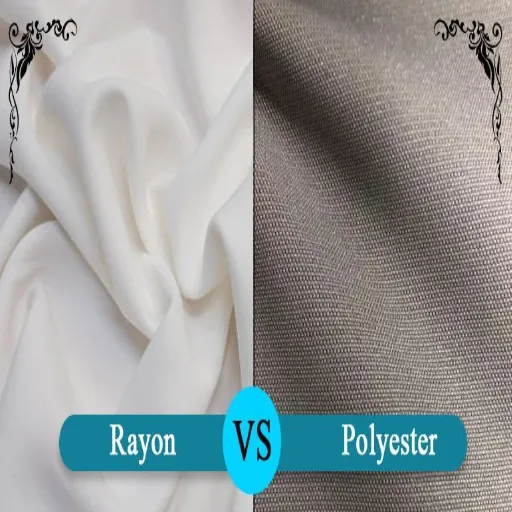
If one looks carefully, there are many differences between polyester and cotton, thus defining the areas of application for each fiber in the industrial world.
| Characteristic | Polyester | Cotton |
|---|---|---|
| Durability | Highly durable, resists wear and tear, designed for long-term use | Durable, but can suffer wear over time with repetitive washing |
| Breathability | Less breathable, tends to trap heat and moisture | Highly breathable, allows air to flow freely, and keeps the wearer cool |
| Maintenance | Low-maintenance, resists wrinkles, dries quickly | Tends to wrinkle, may require ironing, and needs extra care to prevent shrinking |
| Environmental Impact | Uses petrochemical fuels, does not biodegrade, and causes long-term pollution | Biodegradable, organic cotton is eco-friendly, but requires vast amounts of water |
| Cost | Generally cheaper and more widely available | More expensive, particularly organic cotton, due to the natural production process |
Breathability and Moisture Absorption
In terms of breathability and moisture absorption, cotton, a natural fiber, typically outperforms synthetic fibers like polyester. The fabric is highly breathable, allowing for air circulation during the drying period, which is crucial for those engaged in activities under warm or humid conditions. And while polyester generally does not possess this property, it sets the standard for wicking moisture in performance fabrics. It wicks away sweat and dries quickly, a crucial property for athletic wear. The decision will basically depend on the specific activity and environment in which one intends to wear it.
Texture and Comfort
Comparison of texture and comfort would be among the most important considerations to take into account when discussing cotton versus polyester. Cotton offers a gentle and natural touch that widely adds to everyday comfort and is considered soft against the skin. It is the preferred choice for consumers with sensitive skin or those who require casual attire to wear throughout the day. Polyester is not very soft, but it does have its own smoothness and lightweight feel that can be engineered through advanced methods. Sometimes, a quality polyester blend or performance fabric may contain softening agents to make it gentle on the skin. Personal preference, as well as the intended use of the material and fabric technology, may now affect whether comfort and texture align with one’s preferences or not.
Usage Scenarios: When to Choose Polyester or Cotton
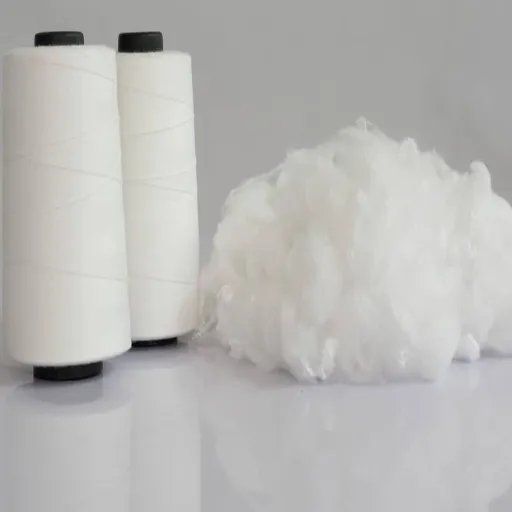
When weighing the pros and cons of polyester and cotton, consider the specific demands of the activity or end use. Polyesters are renowned for their moisture-wicking capabilities and are well-suited for activewear and outdoor gear due to their durability and resistance to wrinkles and shrinkage. They are best suited to situations that demand quick drying and light weight. Cotton performs well for casual wear, everyday wear, or loungewear, as it promotes softness, breathability, and comfort. Cotton is typically recommended for individuals with sensitive skin or those who prefer a natural fiber.
When to Choose Polyester
When topmost performance, durability, and special functional properties are at stake, polyester is selected for consideration. The fiber is used in a variety of athletic and workout clothing due to its moisture-wicking properties, which help the body dry off to keep it cool and dry during stressful physical exertion situations. Resistance to stretch, shrinkage, and wrinkles characterizes the outerwear polyester that is exposed to weather changes. It is often blended with the fibers to improve the feel and its pertinent versatility as well as enhance the strength. Trending search trends indicate that consumer preference remains strong for polyester travel clothing due to its lightweight and fast-drying properties. It is yet again favored in upholstery and household furnishings due to its resistance to abrasions, providing an excellent lifespan for intense use.
When to Choose Cotton
If comfort and airiness are the priorities, cotton is an ideal choice. Buyers frequently search for cotton products due to their soft texture and ability to absorb moisture away from the skin. In a warm climate, cotton is highly accepted because its natural fibers allow for good air circulation; thus, it’s ideal for light and breathable summer clothes. They are friendly to poison, which is another factor in the protection of choices by people with sensitive skin or allergy trends. For a buyer concerned about sustainability, the biodegradability of cotton may be another plus.
Care Instructions for Polyester and Cotton Fabrics
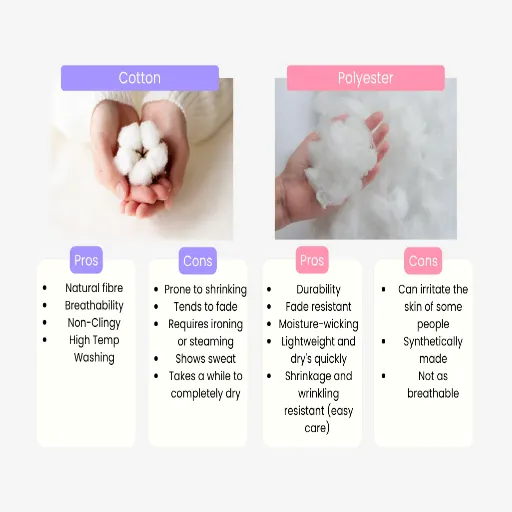
General Care Guidelines
- Washing: The two fabrics are washed in distilled water or warm water. Polyester should be cleaned with a mild detergent; cotton can be washed with regular detergents.
- Drying: Tumble-dry-polyester-on-low-heat-to-avoid-wrinkles. The cotton can withstand medium heat, but it should be removed promptly to prevent shrinkage.
- Ironing: Polyester rarely requires ironing; however, it can be ironed on a low heat setting if necessary. Cotton, on the other hand, can withstand the heat and will help remove many creases.
- Stain Removal: Try using a gentle stain remover to treat stains immediately on polyester. For cotton, soaking in warm water and detergent for some time is usually enough to remove most stains.
- Storage: Store both fabrics in a cool, dry place, avoiding conditions that promote the growth of mold or mildew. Either fold neatly or hang to maintain their shape.
Caring for Polyester Fabrics
More polyester is an incredibly durable and versatile fabric, so utmost care should be taken to preserve its quality. Always read through the care label instructions before attempting to wash polyesters. They usually are machine washable using a mild detergent on a warm setting. High temperatures should be avoided, as they can damage the fibers. Using the low heat setting for tumble drying or air drying is recommended. Avoid any fabric softener if possible, as it might leave a residue that reduces the fabric’s moisture-wicking capability. To remove stubborn wrinkles, set the iron to direct heat or use steam, but always place a pressing cloth over the fabric to avoid potential damage. With gentle handling, polyester fabrics will retain their shape, colors, and function for an extended period.
Caring for Cotton Fabrics
Regarding cotton fabric care, it’s relatively easy, but maintaining good quality over time requires attention to detail. Always read the care label for specific instructions about washing; it may have a particular washing procedure for a special cotton item. Cotton is probably best washed in cold or warm water, as this helps prevent shrinkage and fading. Use a mild detergent, as it helps keep the cotton soft and fresh. For tumble drying cotton fabrics, set the dryer to low heat or air-dry them, as this can significantly increase their lifespan. Cotton can withstand high-heat ironing; alternatively, using steam will yield a crisp finish to eliminate wrinkles. Proper care can ensure that cotton fabrics stay durable, breathable, and comfortable for many years.
Tips for Maintaining Blended Fabrics
Blended fabrics are versatile and durable, but I always follow a few simple steps to maintain their good condition. I wash my blended fabrics in cool or warm water, as any heat applied might adversely affect the mix. I keep colors separated so that no color bleeds from one into another. My washing for melds always uses a gentle cycle and mild detergent to protect the blend’s special properties. I prefer to let these fabrics dry naturally or use the low-heat option from the dryer. And while ironing, I always check the care label for the recommended temperature to avoid burning the fabric. Doing these little things really makes a difference for the blended fabrics; it keeps them looking and feeling good.
Frequently Asked Questions (FAQs)
Reference Sources
There are five professional and authoritative references related to the “polyester vs. cotton” debate that you can consult to verify your article:
- Progress Toward Circularity of Polyester and Cotton Textiles
This study examines the barriers to recycling polyester and cotton textiles, offering insights into circular economy practices for these materials. - Release of Polyester and Cotton Fibers from Textiles in Machine Washings
Investigates the release of microfibers from polyester and cotton fabrics during washing, emphasizing the environmental concerns. - Life Cycle Assessment: Environmental Profile of Cotton and Polyester-Cotton Fabrics
Compares the energy consumption and environmental impact of cotton and polyester production, presenting a detailed life cycle assessment. - Biodegradability Study on Cotton and Polyester Fabrics
Analyzes the biodegradability of cotton and polyester fabrics under various composting conditions, providing valuable insights into their environmental impact. - Microbial Odor Profile of Polyester and Cotton Clothes After a Fitness Session
Examines the odor retention differences between polyester and cotton fabrics after physical exertion, providing insights into wearability.








